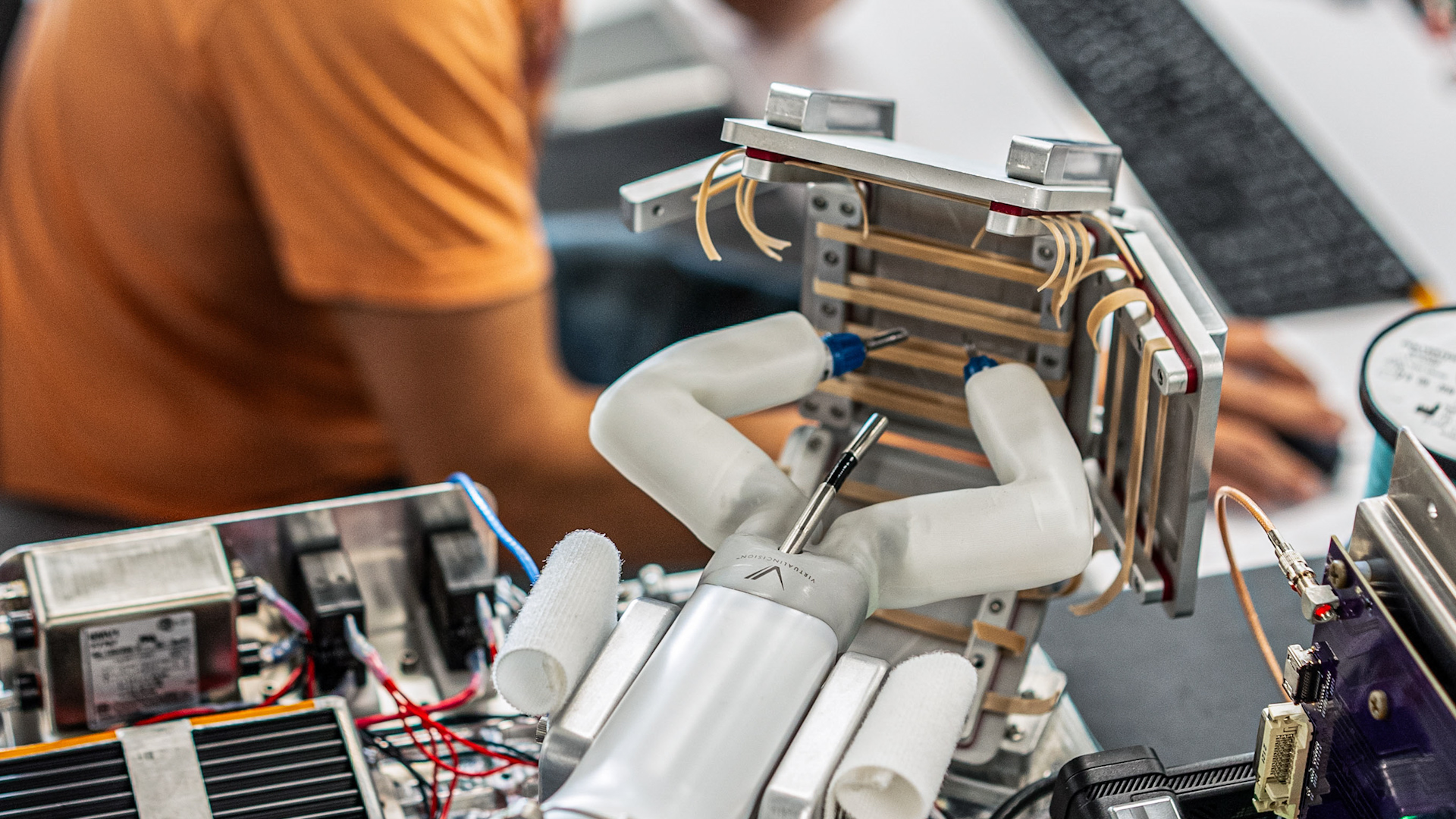
Surgeons complete remote simulated surgery on International Space Station
Media Landscape
See who else is reporting on this story and which side of the political spectrum they lean. To read other sources, click on the plus signs below.
Learn more about this dataLeft 60%
Center 20%
Right 20%
[KARAH RUCKER]
IN ONE PIONEERING LEAP FOR MEDICAL SCIENCE, THE UNIVERSITY OF NEBRASKA’S SPACE-MIRA, A SMALL BUT POWERFUL ROBOTIC SURGICAL ASSISTANT, MADE HISTORY ON THE INTERNATIONAL SPACE STATION
250 MILES ABOVE.
[Shane Farritor]
“Saturday was the first time that a surgical robot in space was controlled by surgeons on Earth to perform simulated surgical activities.”
[KARAH RUCKER]
INSIDE A DEVICE NO LARGER THAN A MICROWAVE, A TWO-HOUR SIMULATED SURGERY UNFOLDED SUCCESSFULLY WITH SIX SURGEONS OPERATING MIRA’S ROBOTIC ARMS TO DISSECT SYNTHETIC TISSUE.
A NEBRASKA-BASED COLORECTAL SURGEON WAS THE FIRST TO TAKE MIRA’S CONTROLS, SAYING:
[MICHAEL JOBST | COLORECTAL SURGEON]
“You have to wait a little bit for the movement to happen, it’s definitely slower than you’re used to in the operating room.”
[KARAH RUCKER]
UNLIKE TRADITIONAL SURGICAL ROBOTS, LIKE THE DA VINCI SYSTEM, WHICH CAN BE THE SIZE OF A SMALL CAR, MIRA is remarkably compact, measuring just over 30 inches in length and weighing around 2 pounds.
THIS BREAKTHROUGH NOT ONLY OPENS DOORS FOR MANAGING SURGICAL EMERGENCIES DURING LONG-TERM SPACE TRAVEL –ITS CREATORS SAY IT PROMISES TO REVOLUTIONIZE HEALTHCARE BACK ON EARTH.
IN THE U-S, ONE-THIRD OF COUNTIES CURRENTLY FACE A SHORTAGE OF LOCAL SURGEONS, A GAP THAT COULD WIDEN TO 30-THOUSAND SURGEONS WITHIN THE NEXT DECADE.
[Shane Farritor]
“So on earth, remote surgery could be very powerful. It’s a ways off in the future, but you can imagine so many hospitals in Nebraska where a specialist or a specialized surgeon isn’t available. And if you could have someone dial in from a distance and assist with the surgery, we can get people to stay home and get better access to the care they need where they live.”
[KARAH RUCKER]
MIRA’S DEVELOPERS SAY THAT THE TECHNOLOGY HASN’T BEEN APPROVED FOR COMMERCIAL USE YET —BUT BELIEVE LONG TERM IT COULD “CHANGE THE FUTURE OF SURGERY.”





